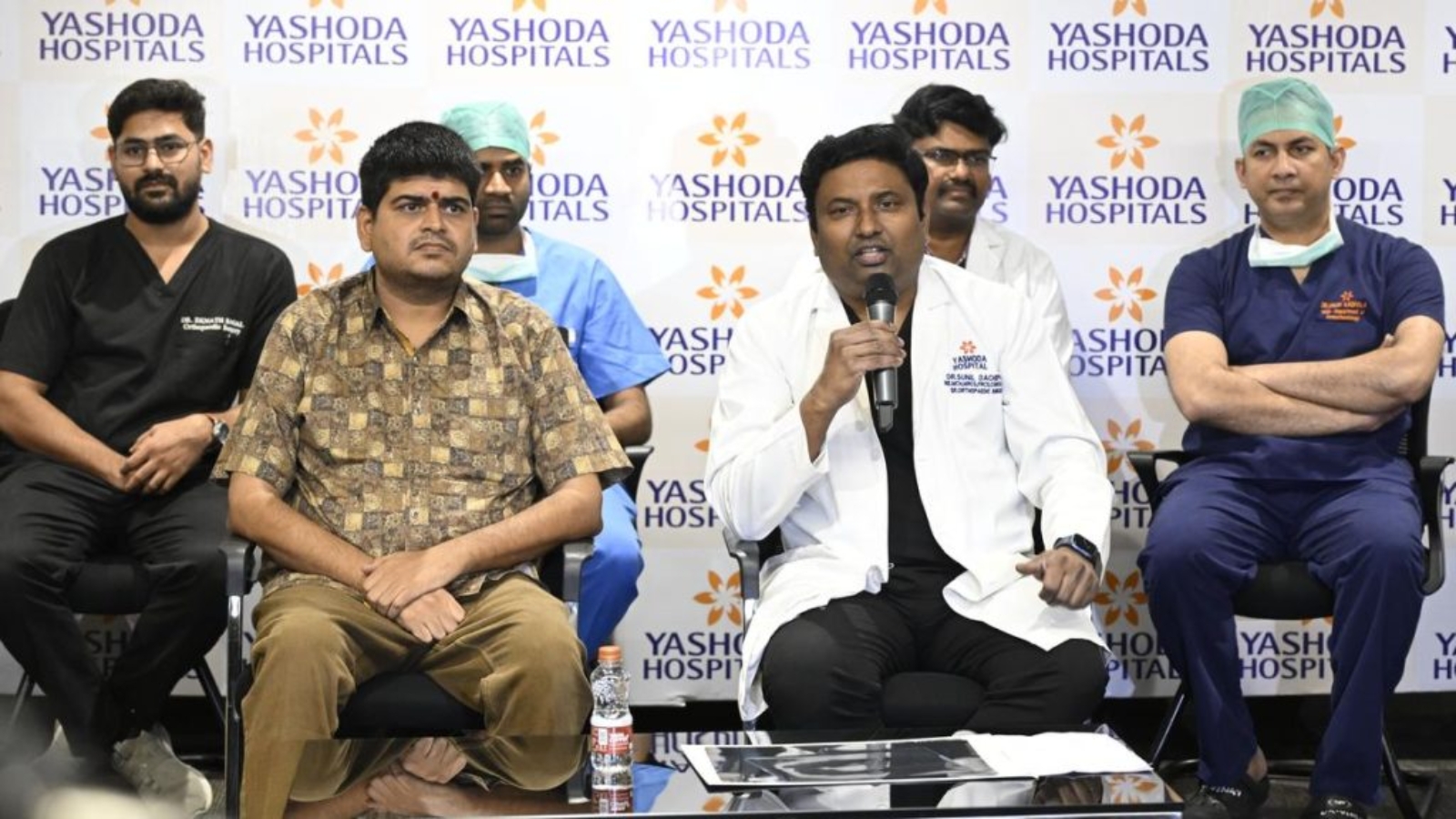Surgeons at Yashoda Hospitals have performed a joint replacement procedure by implanting a custom-made 3D printed titanium talus bone in a 38-year-old patient.
The patient, a businessman from Karimnagar, had sustained an ankle fracture that eventually led to avascular necrosis. According to The Hindu, the condition caused the bone to collapse, resulting in constant pain and difficulty performing daily activities.
Doctors explained that such cases are most often managed by ankle fusion, which relieves pain but severely limits movement. Considering the patient’s young age and active lifestyle, the Orthopaedics and Joint Replacement team led by Dr. Sunil Dachepalli decided to design and implant a titanium talus bone created using 3D printing. Hospital officials confirmed that the patient has since been discharged.

“Using advanced imaging and precise 3D manufacturing technology, a new Talus was created based on CT scans of the patient’s healthy ankle to create a precise replica. This data was used to 3D-print a custom Talus bone made of titanium, a biocompatible and durable metal,” as per the press release.
A similar effort to restore mobility through 3D printed talus replacements was reported in the US. Back in 2016, orthopedic surgeon Dr. Mark Myerson performed customized talus replacements to address severe ankle injuries. Using a CAT scan of the patient’s healthy ankle, engineers created a mirrored digital model to design a 3D printed implant.
Plastic trial versions were tested for fit before finalizing a cobalt-chrome prosthesis. According to Dr. Myerson, the talus replacement restored movement in both the ankle and subtalar joints, enabling patients to regain up to 75% of normal function and significantly improving mobility and quality of life.
Personalized implants restore function and mobility
3D printing is reshaping bone implants by allowing customized designs that match a patient’s anatomy and support faster recovery. The technology makes it possible to produce porous structures that mimic natural bone, improve integration, and reduce production time compared to conventional methods.
Manufacturing on Demand
Last year, metal AM company AddUp partnered with Anatomic Implants to seek FDA 510(k) clearance for what they call the world’s first 3D printed toe joint replacement. Produced on AddUp’s FormUp 350 powder bed fusion system, the titanium metatarsophalangeal (MTP) implant features a porous lattice structure designed to replicate natural anatomy and encourage bone integration.
By addressing limitations of conventional implants, the device aims to improve recovery outcomes while targeting the largely underserved $500 million 1st MTP joint reconstruction market.
Elsewhere, UC San Diego Health completed the world’s first anterior cervical spine surgery using a fully customized 3D printed titanium implant tailored to a patient’s anatomy. Conducted in July 2025, the procedure involved removing a damaged cervical disc and fusing adjacent vertebrae with the personalized device.
Developed through advanced imaging, AI-assisted planning, and additive manufacturing, the implant ensured precise spinal alignment, reduced surgical complications, and lowered the risk of revision surgeries.

In a recent study, researchers at Zhejiang University and Taizhou University developed 3D printed bone fixation implants that provide both mechanical support and targeted infection control. Fabricated with stereolithography (SLA) using dental resin composites blended with the antibiotic ceftriaxone sodium, the custom bone nails were printed on readily available Anycubic machines.
Their design combines a strong outer layer with a porous interior that enables gradual drug release, with up to 80% of the antibiotic delivered within three days. Laboratory tests confirmed antibacterial activity against S. aureus, E. coli, and C. albicans, while maintaining more than 70% cell viability in cytotoxicity assessments.
.
You might also like:
Penn State Researchers Explore 3D Bioprinting to Restore Blood Flow in Reconstructive Surgery: The research is led by Ibrahim Ozbolat, Dorothy Foehr Huck and J. Lloyd Huck Chair in 3D Bioprinting and Regenerative Medicine and professor of engineering science and mechanics, biomedical engineering, and neurosurgery, and Dino Ravnic, professor of surgery and the Dorothy Foehr Huck and J. Lloyd Huck Chair in Regenerative Medicine and Surgical Sciences at the College of Medicine.
* This article is reprinted from 3D Printing Industry. If you are involved in infringement, please contact us to delete it.
Author: Ada Shaikhnag


Leave A Comment